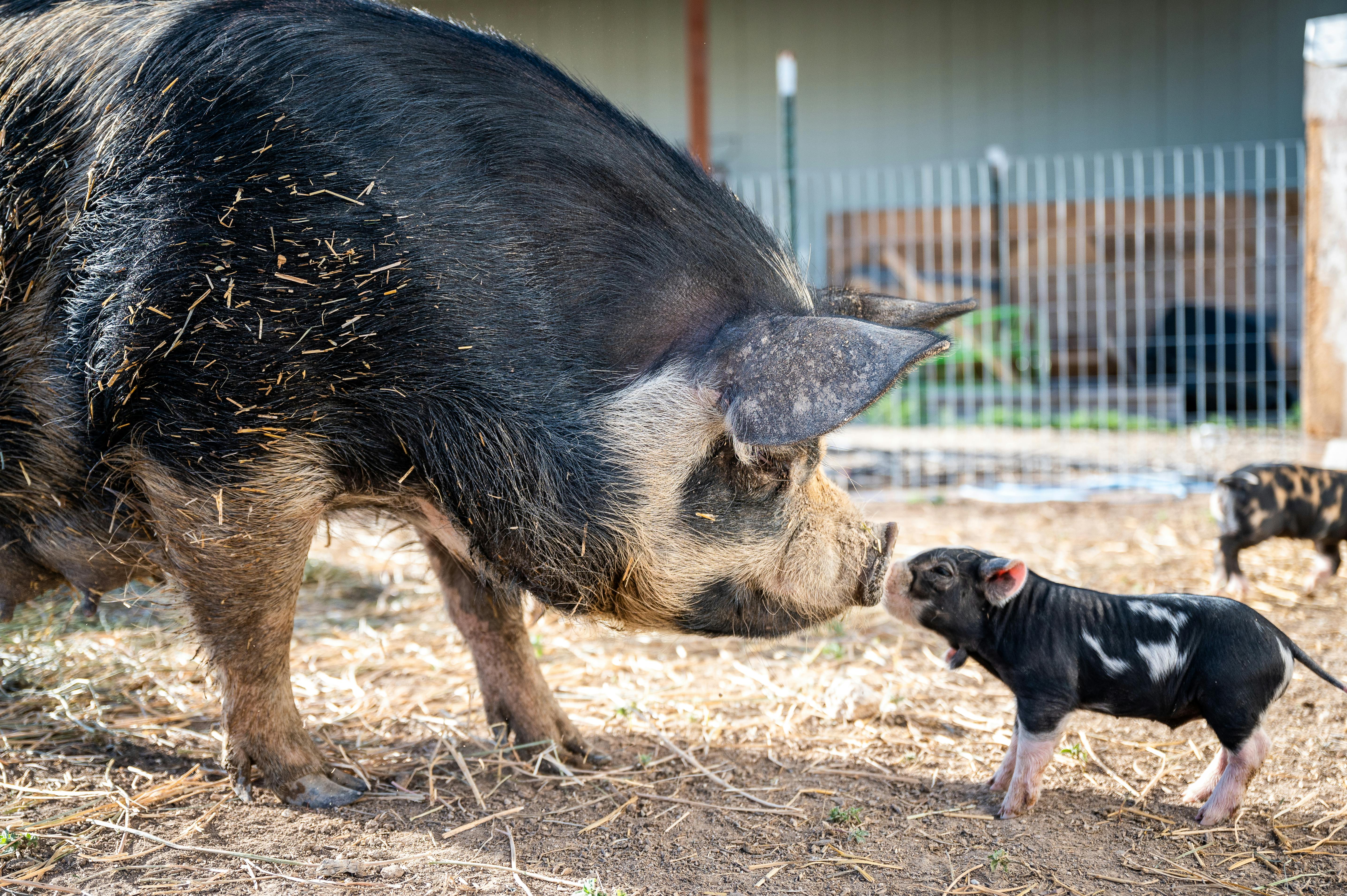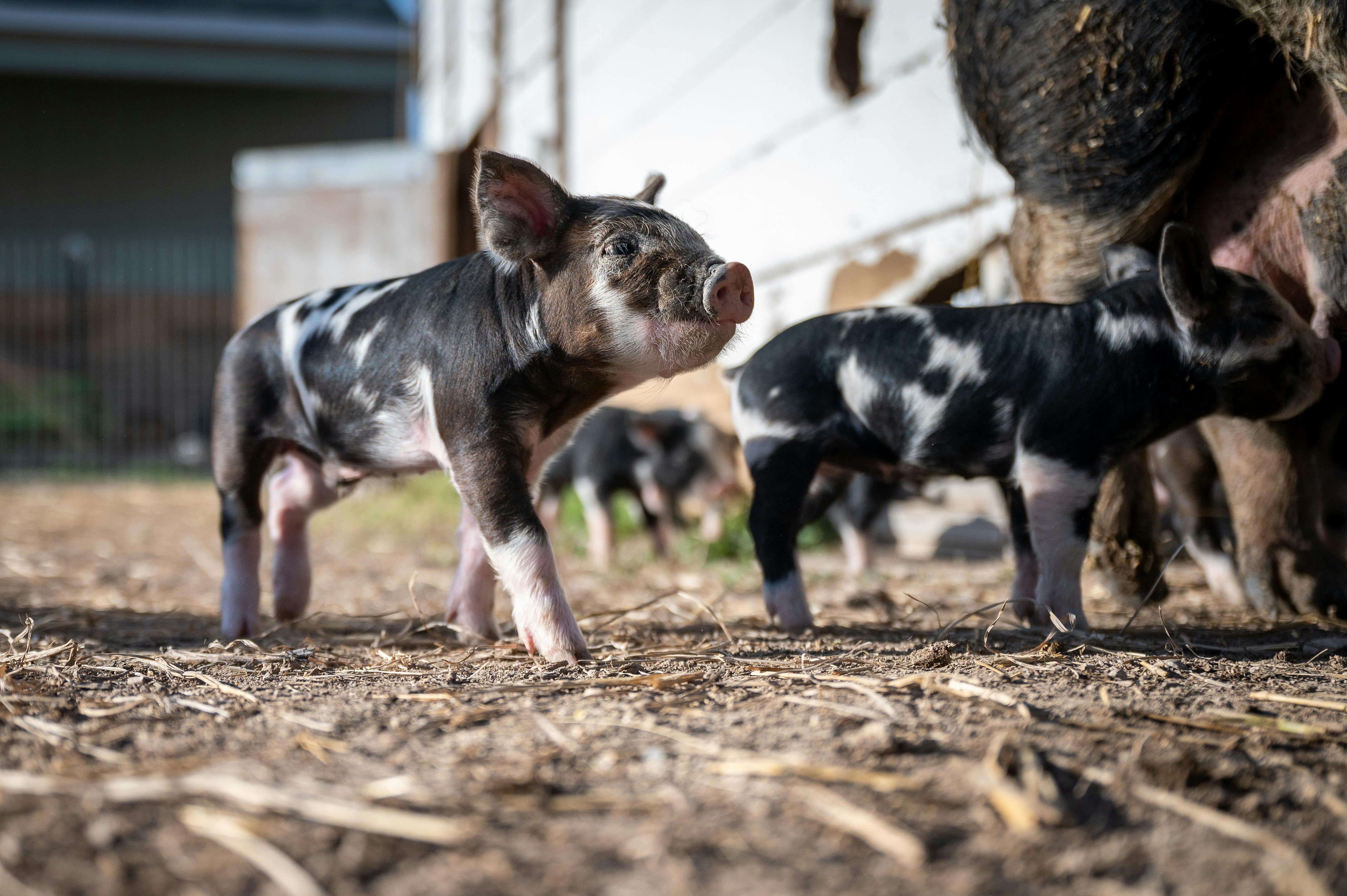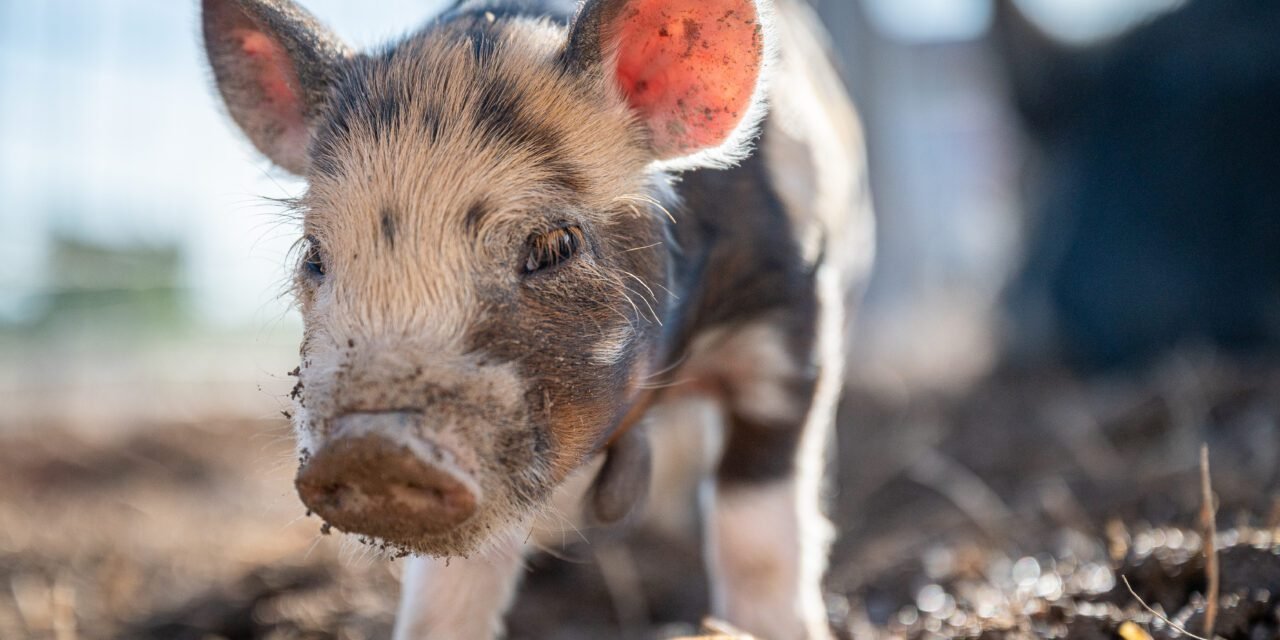Schnauzer breeds are known to have ears that stand up, but do their ears stand up naturally? Schnauzers come in three sizes: the Miniature, Standard, and Giant. The Miniature and Standard Schnauzers have ears that stand upright naturally, while the Giant Schnauzer’s ears will not stand up on their own.
The Miniature Schnauzer has a small size with a beard and eyebrows that are characteristic of its breed. It has a strong square body with short legs and a bushy tail. Its ears are naturally erect, giving it a alert appearance.
The Standard Schnauzer is slightly larger than the Miniature. Its fur is thicker and coarser than the Miniature’s, but it still has naturally erect ears. It is also known for its thick beard and eyebrows as well as its wiry coat which gives it an overall rugged look.
The Giant Schnauzer is the largest of the three types of Schnauzers. Its coat is longer and softer than its smaller relatives and it does not have a beard or eyebrows like the other two breeds. Its ears will not stand upright on their own, so they must be trained to do so in order to give the dog an alert appearance.Schnauzers are a type of dog that come in three distinct sizes: miniature, standard, and giant.
Miniature Schnauzer
The Miniature Schnauzer is the smallest of the three breeds, weighing between 11 and 20 pounds. This breed is known for its wiry coat and bushy eyebrows. They have a spirited personality and make great family pets due to their intelligence and loyalty.
Standard Schnauzer
The Standard Schnauzer is slightly larger than the Miniature, weighing between 30 to 45 pounds. This breed has a double coat consisting of a short undercoat and longer guard hairs. Standard Schnauzers are loyal, protective, and intelligent making them an ideal pet for active families.
Giant Schnauzer
The Giant Schnauzer is the largest of the three breeds, weighing between 60 to 90 pounds. This breed has a thick wiry coat that requires regular grooming due to its long guard hairs. Giant Schnauzers are very alert and protective, however they require an experienced owner due to their strong personalities.
Contents
Physical Characteristics of Schnauzers
Schnauzers are a medium-sized dog breed of the working class, originating from Germany. They are known for their distinctive facial hair, bushy eyebrows and moustache-like beard and whiskers. Schnauzers come in three sizes: miniature, standard and giant. The standard schnauzer stands about 18 to 19 inches high at the shoulder and weighs between 35 to 50 pounds. Miniature schnauzers are usually around 12 to 14 inches tall and weigh between 11 to 18 pounds. Giant schnauzers stand between 23 to 27 inches tall and can weigh up to 80 pounds.
Schnauzers have a thick double coat that is straight or wiry on top with a soft, dense undercoat. This coat repels water and dirt, making them great swimmers as well as having some protection against the cold weather. The coats come in black, salt-and-pepper (silver) or black-and-silver colors. They also have white markings on their chest, feet and face which adds character to their look.
The heads of schnauzers are square with a long muzzle that tapers slightly towards the nose and strong jaws with a scissors bite. Their eyes should be almond shaped; dark brown in color with an intelligent expression when alert. Their ears should also be well set on the head and can be cropped or left natural.
The tail of schnauzer is docked but should never be carried higher than the back line when alert or excited. The legs should be straight with strong bone structure supporting an agile body type while they move with a trotting gait that covers lots of ground quickly.
Overall, schnauzers have a strong muscular body that is balanced by its short legs giving it an attractive yet sturdy look that fits this lively breed perfectly!
What Causes Schnauzer Ears to Stand Up?
Schnauzers have naturally upright ears that are held in place with a few basic grooming practices. The breed’s characteristic ears add to their unique look and are an important part of the breed standard. However, schnauzer ears may not always stand up as they should without some help. There are several factors that can prevent them from standing up, including genetics, coat type, and environmental factors.
Genetics: Genetics can play a key role in determining if a schnauzer’s ears will stand up properly. Some schnauzers may be born with ears that are too floppy or too short to stand up. In these cases, it is unlikely that the ears will stand up without some kind of intervention.
Coat Type: The type of coat a schnauzer has can also prevent the ears from standing up properly. Schnauzers with longer coats may have more difficulty getting their ears to stand up because the long fur gets in the way and can weigh down the ear leathers.
Environmental Factors: Environmental factors such as humidity or temperature can also affect a schnauzer’s ear set. If it is too humid or hot outside, the ear leathers may become too soft and floppy for them to stand upright.
Fortunately, there are several simple steps owners can take to help get their schnauzers’ ears to stand up properly. Regularly brushing and combing the coat can help keep it neat and tidy so that it doesn’t weigh down on the ear leathers. Additionally, using products such as ear glue or wax-based stiffening agents can help keep the ear leathers in place and give them extra support when needed.
By following these steps and understanding what may prevent a schnauzer’s ears from standing up properly, owners can ensure their pup looks their best at all times!
Is It Natural for Schnauzers Ears to Stand Up?
Yes, it is natural for Schnauzers ears to stand up. This breed of dog is known for having distinctively pointed ears that are naturally erect and point forward. In fact, the breed standard for the Schnauzer states that the ears be “erect and pointed”. The erect ears of a Schnauzer give them a unique look that sets them apart from other breeds.
However, not all Schnauzers will have their ears standing up on their own. Some may require assistance in getting their ears to stand up properly. This can be done by using tape or glue to help hold the ear in place as it grows into an upright position. Additionally, some owners may choose to have their Schnauzer’s ears cropped, which can help encourage the ears to stay in an upright position.
Schnauzers are a loyal and intelligent breed of dog with distinctive features like their pointed, erect ears that make them special and desirable companions. Even though natural erect ears may not come easily for all Schnauzers, there are a variety of ways to help encourage them so your pup can look and feel their best!
Benefits of Schnauzers Ears Standing Up
Schnauzers are popular for their unique look and friendly personalities. One of the most distinctive characteristics of Schnauzers is their ears, which stand straight up from the head. This feature not only gives the breed a signature look, but it also comes with several benefits.
Firstly, erect ears provide excellent ventilation for the ear canal. When air circulates through the ear canals, it helps to keep them dry and free of moisture which helps to prevent ear infections. Secondly, standing ears help to reduce heat loss from the brain and thereby maintain body temperature more effectively in cold weather.
The ears of a Schnauzer are also able to pick up sound better because they can detect sound waves coming from different angles. With better hearing ability, they can alert their owners more quickly when danger is near or when visitors arrive at the door. Lastly, erect ears give the breed an alert and attentive expression, which makes it easier for people to recognize them as a friendly breed that loves company.
In conclusion, Schnauzers’ ears standing up offer numerous benefits that go beyond their distinct look. Not only do they provide excellent ventilation for the ear canals and reduce heat loss from the brain in cold weather, but they also give these dogs better hearing capabilities and an alert appearance that is easily recognizable by people.

How to Train a Schnauzer’s Ears to Stand Up
Training a Schnauzer’s ears to stand up can be an rewarding experience for both you and your pet. Schnauzers are known for their distinctive “bobbed” ears that stand up and perk forward. The goal of training is not only to get the ears to stand up, but also to keep them healthy and manageable. Here are a few tips for training your Schnauzer’s ears:
Regular Grooming
Start by making sure that you groom your dog’s fur and their ears regularly. This will help keep their fur healthy and the ear area clean, which will make it easier for the ears to stay upright. Make sure you use a specialized brush that is designed specifically for long-haired breeds such as the Schnauzer.
Ease Into It
When first trying to train your dog’s ears to stand up, start with short periods of time. It may take some time before your dog gets used to having their ears standing up, so start with short training sessions and gradually increase the time as they get used to it.
Be Patient
It is important that you remain patient throughout the process of training your dog’s ears. This may take some time and it is important that you be consistent in order for them to learn. If they seem frustrated or uncomfortable with what you are doing, stop immediately and try again another day.
Use Treats
Using treats can be a great way to motivate your dog during this process. Give them treats when they do something correctly or when they stay still for their ear-training sessions. This will help reinforce the behavior and make them more likely to cooperate in the future.
Consult Your Veterinarian
Finally, if at any point during this process you feel like things aren’t going well, consult your veterinarian right away. They can provide advice on how best to train your dog’s ears as well as offer any medical advice that might be necessary.<
Grooming Requirements for a Schnauzer with Standing Ears
Grooming a Schnauzer with standing ears is an important part of keeping them healthy and looking their best. The most important thing to remember is to keep their coats well trimmed, as longer coats can easily become matted and tangled. Regular brushing and combing are also necessary in order to prevent mats from forming. In addition, regular baths and ear cleaning will help keep the coat and ears free of dirt and debris. Lastly, trimming the nails regularly will help ensure that the nails are kept short and even.
When it comes to trimming your Schnauzer’s coat, you should use a clipper or scissors depending on what type of cut you want. For shorter cuts, clippers can be used while scissors tend to be better suited for longer cuts. If using clippers, make sure that they are sharp and properly adjusted before beginning the process. When using scissors, it’s important to be careful not to cut too close to the skin as this could cause irritation or injury.
When it comes to brushing your Schnauzer’s coat, a natural bristle brush is usually best as it won’t pull or snag their fur like other types of brushes might. Additionally, a metal comb should be used after brushing in order to remove any tangles or mats that may have formed. It’s also important to pay special attention to areas around the eyes, ears, tail, and paws as these tend to collect dirt more quickly than other areas of their body.
Lastly, regular baths using a mild shampoo designed specifically for dogs is essential in order to keep their coats clean and healthy. You should also make sure to clean their ears regularly using an appropriate cleaner in order to prevent any buildup of wax or debris that could lead to infection or discomfort. Finally, trimming your Schnauzer’s nails regularly will help ensure that they stay short and even so they don’t become too long and uncomfortable for them.
Common Health Issues in Schnauzers with Standing Ears
Schnauzers, with their iconic pointy ears, are an enduring breed of dog. However, some Schnauzers have been bred to have their ears stand up straight instead of the traditional floppy ears. While these dogs may look different than the original breed, they are still prone to many of the same health issues. Here are some common ailments that Schnauzers with standing ears may face:
- Ear Infections: Schnauzers with standing ears are more prone to ear infections due to their ear shape and the accumulation of moisture in their ear canals. Regular cleaning and care can help reduce the risk of infection.
- Skin Conditions: Schnauzers can suffer from a variety of skin conditions due to their thick fur and skin. Common problems include allergies, hot spots, and bacterial infections.
- Eye Problems: The eyes of these dogs can be prone to infection or injury due to their protruding shape. Owners should keep a close eye on any changes in a Schnauzer’s eyesight.
- Obesity: Like many other breeds, obesity is a potential problem for Schnauzers. Regular exercise and healthy diet are important for keeping these dogs healthy and fit.
Overall, it is important for owners of these breeds to be aware of potential health risks associated with them in order to provide proper care for their pets. With regular check-ups from a veterinarian as well as proper grooming and nutrition, owners can ensure that their Schnauzer stays happy and healthy throughout its life.

Conclusion
Schnauzers are a unique and popular breed of dog. They have many unique physical attributes, including their ears, which do not stand up naturally. Instead, they need to be trimmed and trained in order to keep them standing upright. For those who want their Schnauzer to have the classic look with its ears standing up, this is a necessary part of ownership. With proper care, Schnauzers will look great with their ears standing up for years to come.
Overall, Schnauzers are an excellent breed of dog that require a bit of extra care when it comes to their ears. With a little bit of effort, owners can ensure that their Schnauzer looks its best with its distinctive and iconic upright ears.





